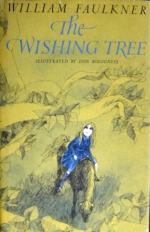|
This section contains 217 words (approx. 1 page at 300 words per page) |

|
Believing that children need to confront truth head-on, Faulkner refused to simplify the complications of adult life.
The heroine, Dulcie, faces the future without fear and without resorting to comforting illusions. For instance, the marital problems between Alice and her husband are discussed openly before the children, while the unnamed old man is nagged relentlessly by his spouse. Furthermore, the book contains a realistic discussion of how society tries to solve its disputes through warfare.
The old man and Alice's husband, who has just returned from the First World War, expose the children to the senseless and demeaning aspects of war.
Of special concern is Faulkner's depiction of race. Again, the depiction is realistic, showing race relations in the South as they existed in the 1920s. Dulcie treats her black nurse Alice as a servant, and although Faulkner disagrees with this view, he narrates the story...
|
This section contains 217 words (approx. 1 page at 300 words per page) |

|




